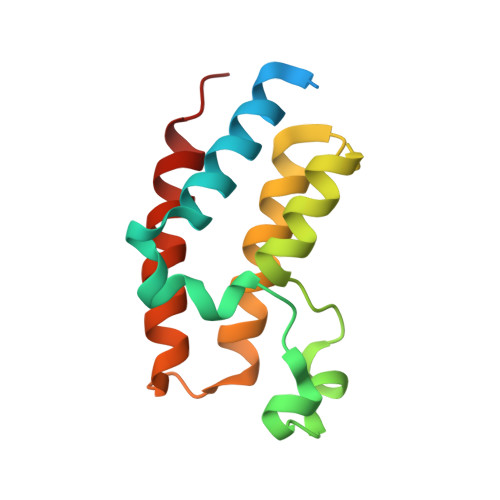Design and characterization of bivalent BET inhibitors.
Tanaka, M., Roberts, J.M., Seo, H.S., Souza, A., Paulk, J., Scott, T.G., DeAngelo, S.L., Dhe-Paganon, S., Bradner, J.E.(2016) Nat Chem Biol 12: 1089-1096
- PubMed: 27775715
- DOI: https://doi.org/10.1038/nchembio.2209
- Primary Citation of Related Structures:
5JWM - PubMed Abstract:
Cellular signaling is often propagated by multivalent interactions. Multivalency creates avidity, allowing stable biophysical recognition. Multivalency is an attractive strategy for achieving potent binding to protein targets, as the affinity of bivalent ligands is often greater than the sum of monovalent affinities. The bromodomain and extraterminal domain (BET) family of transcriptional coactivators features tandem bromodomains through which BET proteins bind acetylated histones and transcription factors. All reported antagonists of the BET protein BRD4 bind in a monovalent fashion. Here we describe, to our knowledge for the first time, a bivalent BET bromodomain inhibitor-MT1-which has unprecedented potency. Biophysical and biochemical studies suggest MT1 is an intramolecular bivalent BRD4 binder that is more than 100-fold more potent, in cellular assays, than the corresponding monovalent antagonist, JQ1. MT1 significantly (P < 0.05) delayed leukemia progression in mice, as compared to JQ1. These data qualify a powerful chemical probe for BET bromodomains and a rationale for further development of multidomain inhibitors of epigenetic reader proteins.
Organizational Affiliation:
Department of Medical Oncology, Dana-Farber Cancer Institute, Boston, Massachusetts, USA.















